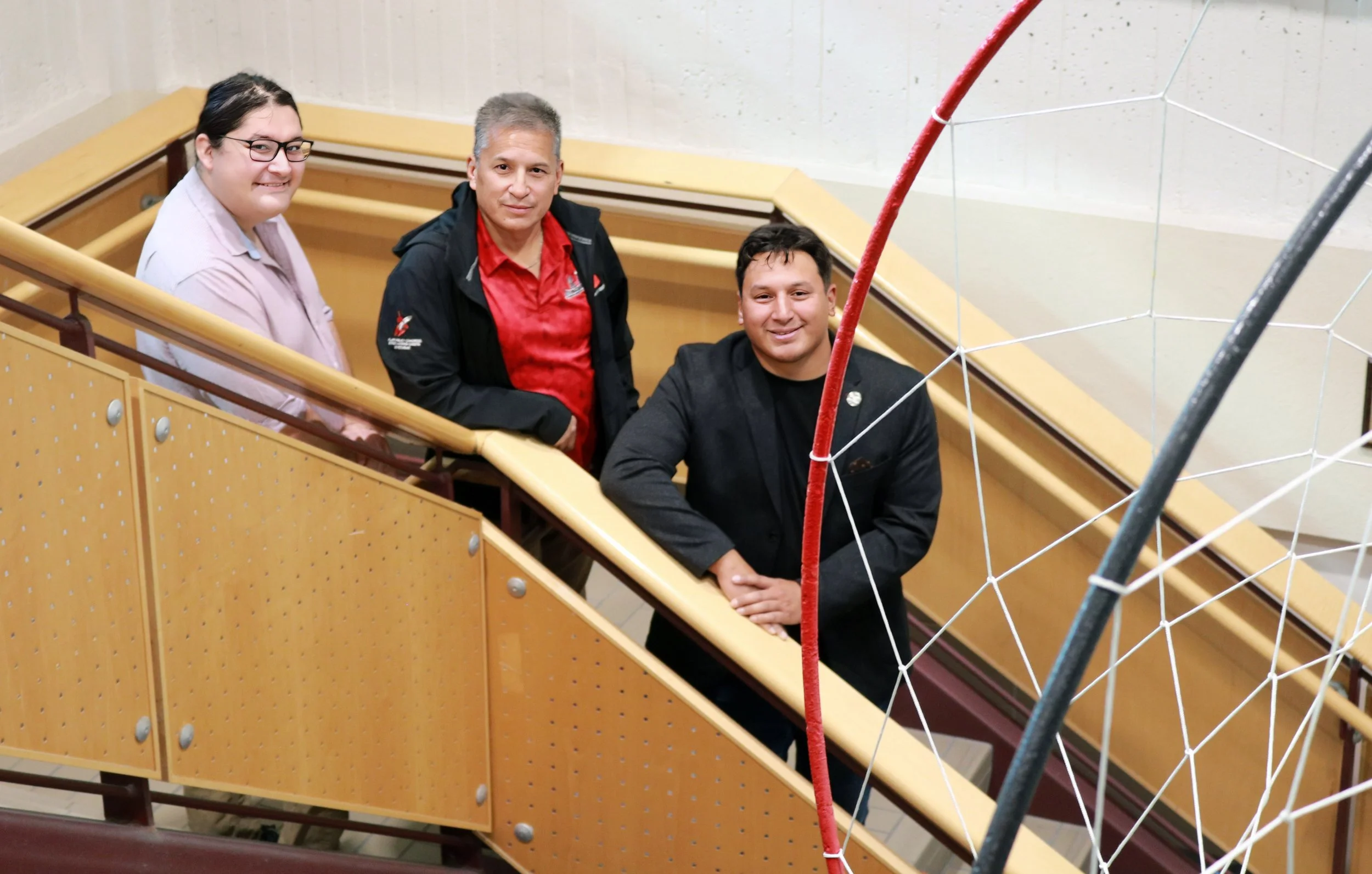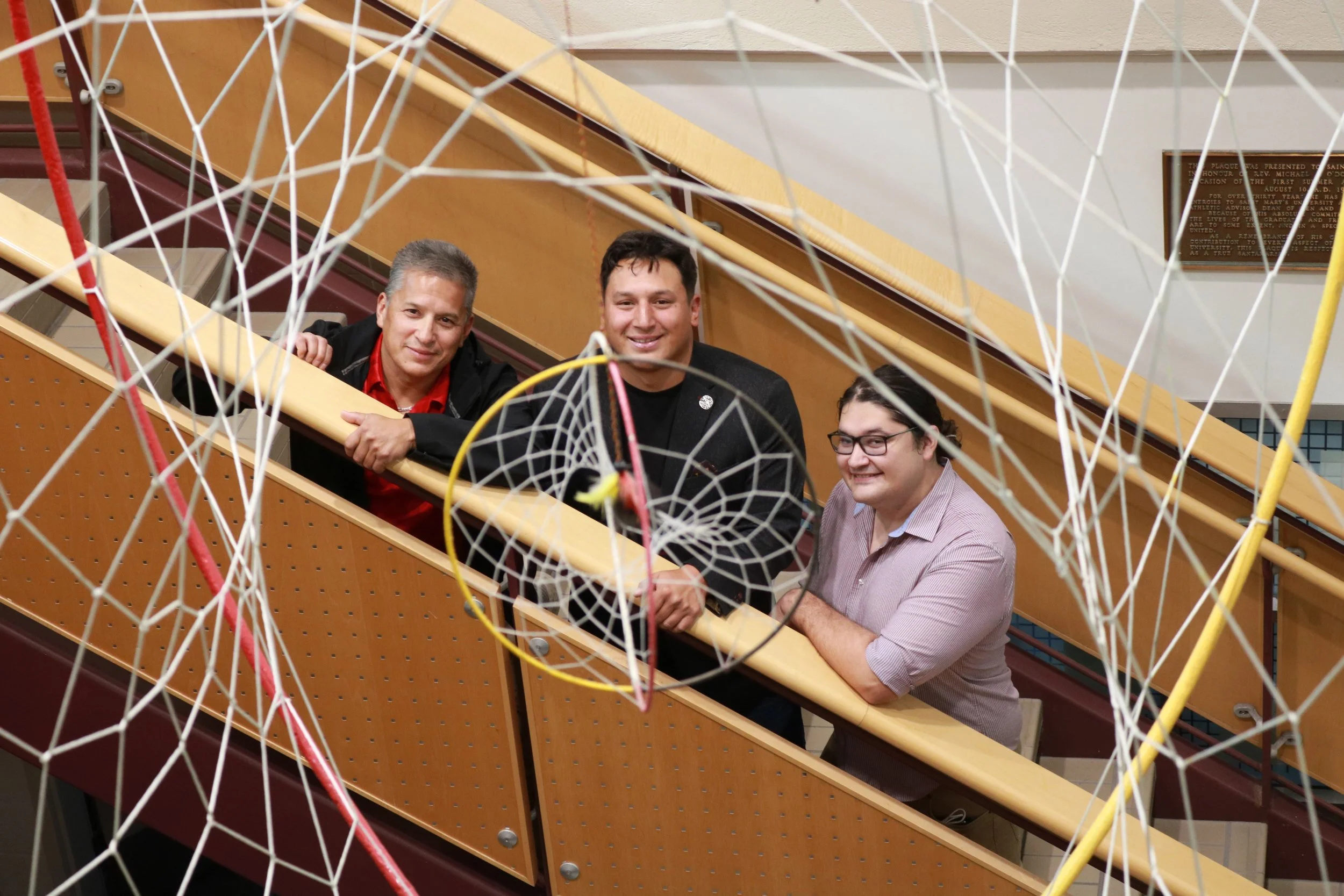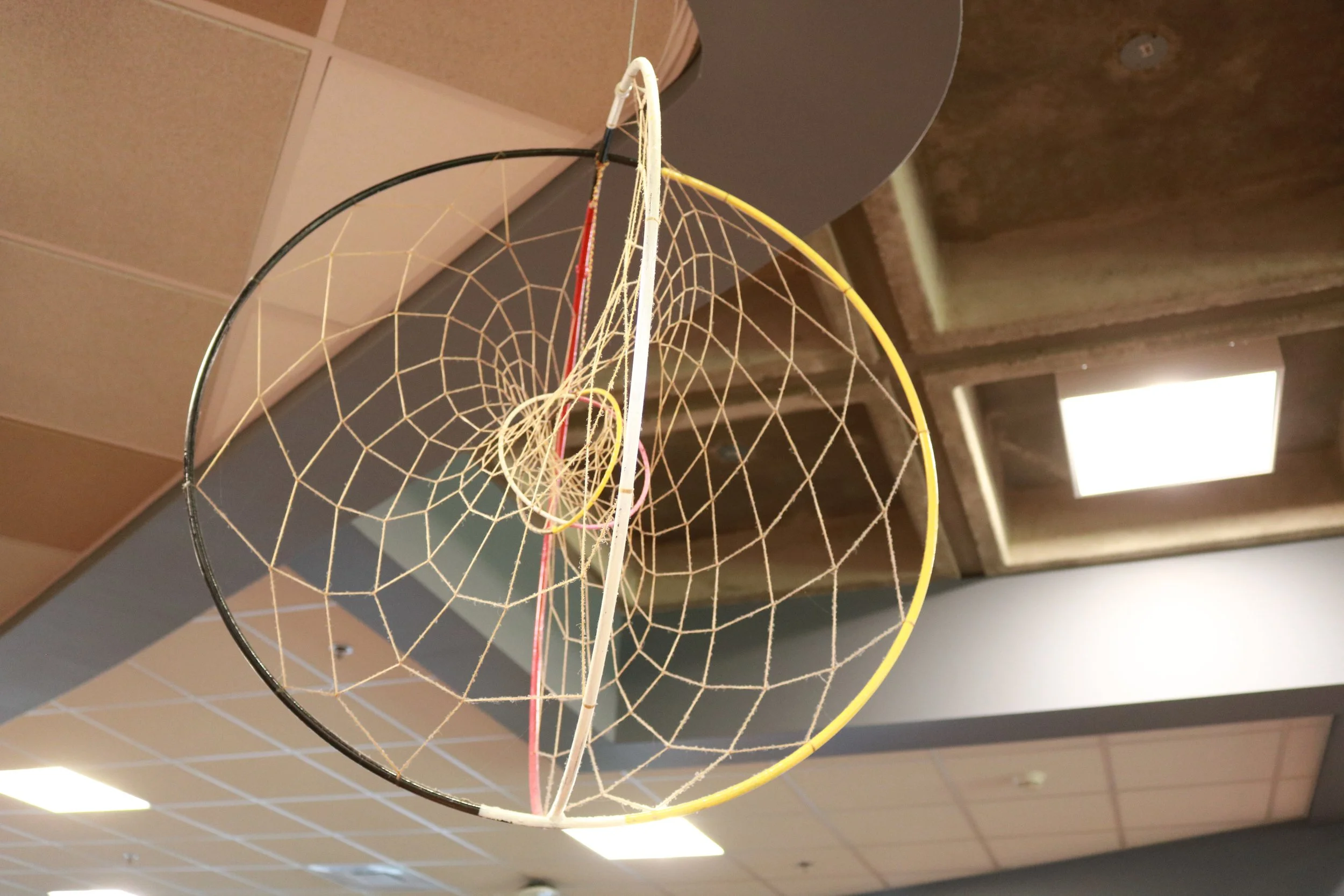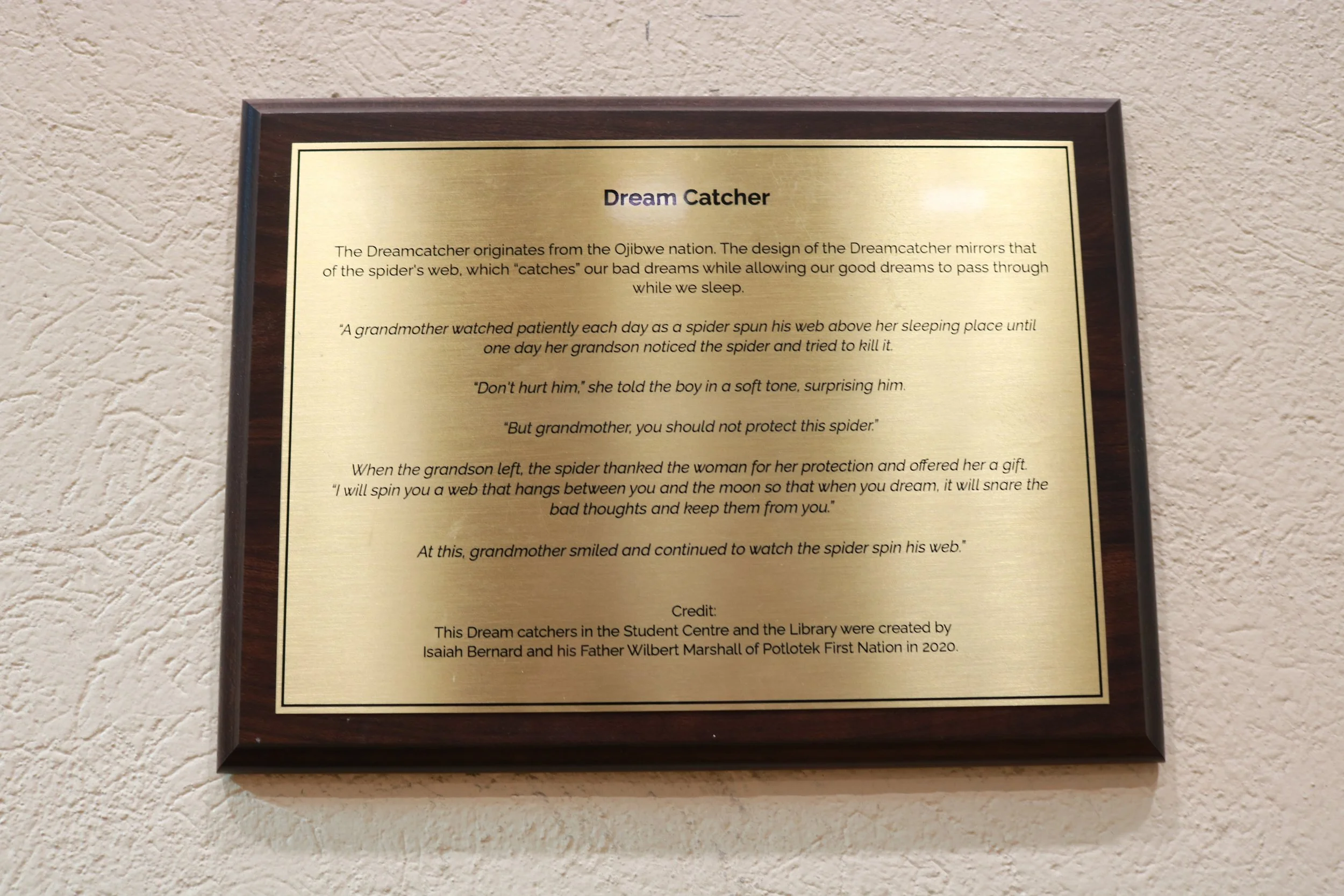Indigenous Student Advisor Kylar Johnson, Chief Wilbert Marshall and Isaiah Bernard stand under a dream catcher on SMU campus
The Mi’kmaq tradition of storytelling has long been a way of carrying culture, history and teachings across generations. At Saint Mary’s University, that same tradition is carried forward in two large dream catchers installed by son and father duo, Isaiah Bernard and Chief Wilbert Marshall of Potlotek First Nation.
More than art, the dream catchers are symbols of presence and visibility; threads of Mi’kmaq culture woven into the heart of campus.
“When I was a student here, I would see all these cultures represented, but I didn’t see my own,” describes former SMU student and former Indigenous Student Society president, Isaiah Bernard. “The university is on Mi’kmaq land, so we should be showcased within the campus. I brought the idea to the university President and to SMUSA (Saint Mary’s University Students’ Association), and they all agreed.”
Bernard’s father, Chief Marshall, taught him how to make dream catchers as a child, and they seemed like the perfect art form to display in prominent campus buildings.
“When the Europeans came, our people were annihilated and we lost everything, so we had to adopt a lot of our traditions from different tribes like out west in British Columbia,” explains Chief Marshall. “Everyone has their own spin on the story of the dream catcher.” The story is that a woman protects a spider spinning its web, and in thanks, that spider spins a web between her and the moon to ensnare bad thoughts and keep them from her.
“There are many different ways you can make a dream catcher; you can put three rings, or four, or even single rings. There are usually tassels on it, and on the weave, you can make different designs in the web itself,” shares Chief Marshall.
Chief Marshall and Bernard built and installed the dream catchers in 2020
One of the dream catchers hangs in the lobby of the O’Donnell-Hennessey Student Centre, the other is in the Patrick Power Library
Working with repurposed crab trap pipes and biodegradable rope, the pair created large dream catchers with two rings. “We put a little dream catcher in the middle—you’ll see the braided string that’s on there. It’s got the four directional colours on there also. Everything was done completely by hand.”
On October 1 – Treaty Day – Isaiah Bernard and Chief Marshall returned to Saint Mary’s campus, alongside Indigenous Student Advisor Kylar Johnson, to unveil newly installed plaques commemorating the dream catchers.
A plaque commemorating the dream catcher installation
“When we brought the dream catchers to campus, the welding broke. We had to get that fixed, repaint it and let it dry, so we asked the university if we could leave it on campus and then web it on site,” recalls Bernard. “It was cool to make it on campus in front of a live crowd. It took us about four hours [to web and install] because people kept coming by to watch us and ask questions – it was really something!”
The dream catchers have been more than a pastime for Bernard and his father; they are a way to connect with family, community and culture. Their dream catchers are installed across Mi’kma’ki, including Glooscap and Membertou, and Chief Marshall has put on seminars to teach younger generations how to make them. Through sharing the craft, they are bringing visibility to Mi’kmaq traditions and reclaiming practices that were once at risk of being lost.
“People often forget that Mi’kmaq were the first people here. This is Mi’kmaq nation, from dusk ‘til dawn, before others got here and after they leave, this is our territory, our culture. We were the first ones,” exclaims Bernard. “It’s time they start honouring the first people here and showcasing Mi’kmaq culture. We have a rocky history, and not enough of that is taught,” he adds.
Chief Marshall reflects, “Now, we have Treaty education in schools, but people also need to learn about the hard truths of our history. You can’t mask that, it has to be talked about.”
“I hope [the dream catchers] inspire the community here to learn about the First Nations, learn about the community, about our history, most importantly, and about our Mi’kmaq people,” Bernard emphasizes.
Hear from Isaiah and Chief Marshall about their dream catcher project at Saint Mary’s.
October is Mi’kmaq History Month. Learn more here: Mi'kmaq History Month: Events and resources for the SMU Community




